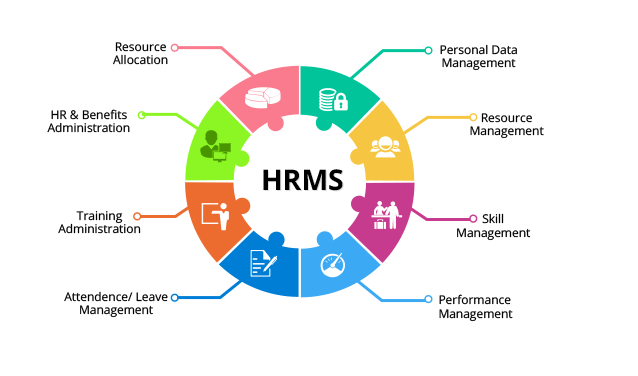
HRMS vs Traditional HR: Why Smart Companies Are Making the Switch
The modern and dynamic corporate world requires that human resources be handled properly in ensuring that they make an organization successful. The old-fashioned HR practices that depend on manual technology, paper-driven systems, and irrelevant tools are failing to show their effect. Here comes Human Resource Management Systems (HRMS), which is a technology-based solution that automates HR operations, increases output, and easily keeps pace with the contemporary workforce requirements. The smart firms have advanced to an HRMS to remain competitive, and here is why.
The Limitations of Traditional HR
Traditional HR is based on the manuals of records, spreadsheets, and face-to-face procedures. Although these approaches were effective in the past, they are not effective in the dynamic workplaces now. Traditional HR has many issues that create bottlenecks when it comes to scaling companies or keeping up with new workforce trends. Let's take a look at some of the major limitations of the Traditional HR practices.
Time-Wasting Activities: Laborious data entry of payroll, attendance, or employee records is a time-wasting activity that the HR department can use on higher-priority activities. To give an example, it is easily delayed and error-ridden to work out overtime or leave balances by entering them manually in Excel sheets
Error-Prone Systems: Human mistakes made during the calculation of the payroll, tracking the compliance terms, or managing the data about the employees can become expensive. As they can result in wrong paychecks or fines.
Unscalability: A startup may not be able to deal with the data entering their system manually in the long term as the businesses expand. The usual procedure fails to support big workforces or a distributed team in more than one location.
Fragmented Data: Information residing in unaligned systems, e.g., paper files, email, or standalone software, is constrained to form disjointed silos. Therefore, it makes it difficult to acquire real-time data analytics or come up with an extensive report.
Dissatisfaction of employees: Employees get irritated when the response to employee requests is slow, onboarding is manual, or there is a delayed approval process, and this affects employee morale and engagement.
The HRMS Advantage
An HRMS unites all HR functions (recruitment, payroll, attendance, performance management, and compliance) on a singular platform. It facilitates automation that runs on cloud technology and analytics, which gives HRMS a great benefit in comparison with the traditional technique. Let's have a look at some significant advantages of the HRMS software.
Automation Increases Productivity
HRMS is an automated system that carries out redundant activities such as payroll preparation, vacation records, and benefits. An example is the ability to compute deductions, taxes, and bonuses instantly, cutting down on the processing time of HRMS payroll software, which can take days to complete. Automation also reduces the occurrence of errors, making it accurate in aspects such as compliance and compensation.
Central Data Management
An HRMS has the flexibility that information about all employees is located in a single database that includes only personal details, performance data, and training history. This eliminates the necessity to keep several files at hand and also gives the HR team the possibility to access real-time information. Managers will find it easy to extract the data that they can utilize in decision-making, such as the productivity of the employees or absenteeism trends.
Improved Worker Experience
Innovative HRMS systems have self-service portal solutions where workers can make or change personal details, apply for leave, obtain their pay slips, or perform the onboarding process. This will enable workers, limit the administrative load carried by their HR, and contribute to a positive employment experience.
Data-Driven Insights
HRMS tools have powerful reporting and analysis functions. The measurements that the companies can follow refer to turnover rates, recruitment timelines, or the efficiency of training. Such insights help the HR leaders stay informed and make informed decisions to ensure that the business optimises its hiring practices or resolves the issue of employee engagement in advance.
Flexibility and Scalability
In contrast to traditional HR, the HRMS systems are built to grow along with organisational expansion. An HRMS is flexible enough for a company expanding to new locations or the remote workforce. The integration process is also available on cloud-based systems so that they facilitate the integration with other tools, including accounting programs or collaboration solutions, establishing a complete ecosystem of technologies.
Simple Compliance
Traditional HR finds it difficult to stay in line with the labour law, tax compliance, and industry compliance. HRMS solutions can automate compliance activities where a report is needed regarding tax or mandatory training requirements. Warnings and notifications are used so that the deadlines are not missed and possible penalties are avoided.
Why Smart Companies Are Switching?
Many smart companies have switched to HR Management Systems (HRMS) to remain competitive and effective. This type of system is automated and less costly, as well as facilitating increased productivity. High-quality candidates will also be retained and recruited through the assistance of HRMS, which can make the lives of the workforce more efficient. This movement is revolutionising the process of managing the workforce.
Cost Savings: Automation saves time and resources because of reduced need for manual labour. As an illustration, a company with an average size may save thousands of dollars a year through automation of the payroll and minimisation of errors.
Higher Productivity: HR teams will be available to take up strategic projects such as the development of talent rather than the more menial procedures. Market research done in 2023 reported that firms employing HRMS realised a 30 per cent boost in the productivity of the HR team.
Improved Employee Retention: Workers who are engaged have higher retention rates. Through smoother practices and transparency, HRMS adds to the development of engagement, hence, low turnover.
Competitive Advantage: In a tighter labour market, successful firms possessing effective HR tools and efficient management of recruitment can recruit top talent because of the provision of modern and technologically advanced working conditions.
Conclusion
HRMS is a game-changer for businesses aspiring to be successful in the current competitive environment because of the shift from traditional HR. In these areas where more traditional systems are struggling under the pressures of manual processes, data entry mistakes, and absenteeism, HRMS gives them automation, centralised information, and insight that can lead to productivity and employee satisfaction. HRMS allows businesses to focus on growing their businesses to the next level as their operations become streamlined and compliant, and are easily scalable to allow them to leverage strategic growth and development of talent.


